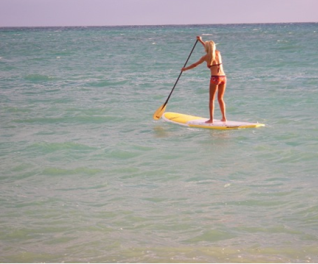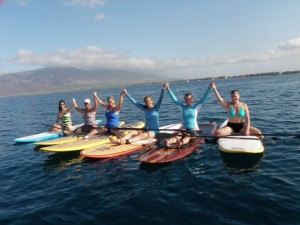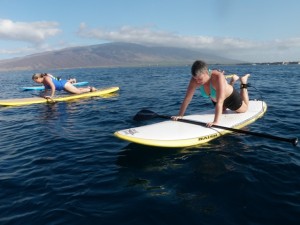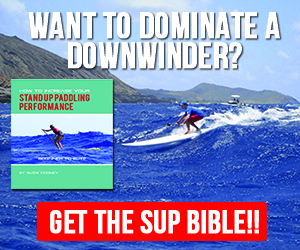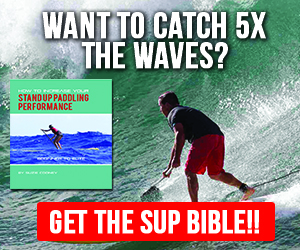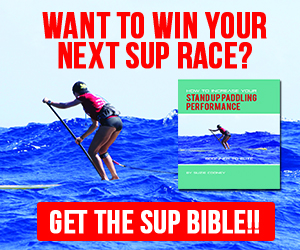As most of you know, SUP or stand up paddling is a big part of my life and I enjoy teaching others and sharing the health benefits of this sport.
Here is an article I wrote for ATHELTA to share my knowledge and enthusiam for how I see the sport shaping the world but more importantly, how it’s getting more people healthy.
I encourage you to read and share how SUP has benefitted your health! Click here to read the full story:
Well, by the overwhelming response and stories I read as one of the judges for the most recent ATHLETA and SIREN SUP contest, one can say that any age, any person can “sweep” their way to better health, just about anywhere there is water. People all across the world are “sweeping” their way to better health and having more fun than they ever imagined. “Sweeping” is a slang term used to describe the sport that is going viral faster than any social networking media and changing the world of sports on any body of water — and just about anyone can hop aboard.
Stand up paddling, paddle surfing, or SUP is helping people of all ages and sizes catch the surfer’s glide, and helping people in all walks of life get fit and healthy, faster and safer. People are simply getting addicted. The Wall Street Journal recently reported on the rise in popularity — not just for those, like me, who are fortunate enough to live in Hawaii or California, but anywhere there’s an ocean, lake, bay, or even river rapids, you can find this world phenomenon catching on. There are SUP fitness boot camps and clinics popping up anywhere there is water. You may have noticed more races and events happening in your community too.
Below are some photos of a recent FREE women’s Sup clinic last month, and these gals were wonderful. In the first hour, there were smiles across the ocean and a new found ticket to health. I do these monthly to ensure the health of our community and introduce women and men to a new way to get fit! For “fun” I had the girls attempt a few push ups. They were amazing. On the right is Amy Hampton, the Director of Maui’s American Heart Association, getting her heart pumping!
WHAT’S SUP?
According to Wikipedia: Stand up paddle surfing (SUP), or in the Hawaiian language Hoe he’e nalu, is an emerging global sport with a Hawaiian heritage. The sport is an ancient form of surfing, and began as a way for surfing instructors to manage their large groups of learner surfers, as standing on the board gave them a higher viewpoint, increasing visibility of what was going on around them — such as incoming swell. To begin with, this started with using a one-bladed paddle, whilst standing on a normal length surfboard. The popularity of the modern sport of SUP has its origination in the Hawaiian Islands. In the early 1960s, the Beach Boys of Waikiki would stand on their long boards, and paddle out with outrigger paddles to take pictures of the tourists learning to surf. This is where the term “Beach Boy Surfing”, another name for Stand Up Paddle Surfing, originates.
THE BENEFITS OF SUP
Not only can you lower your blood pressure, improve your cholesterol and feel more energized after a session, but the overall experience of being on the water is often touted as “aqua therapy.” The benefits of having a sport you enjoy and can do on a regular basis can alter many of the morbidity factors that decrease our health and plague our society.
I use this sport as a cross-training tool for almost all my clients who are comfortable in the water and who can swim. It is low impact on all joints and is also being used to improve balance and core strength for people recovering from serious injuries. I used my stand up paddle board to recover from a serious bilateral leg and ankle accident. I have also witnessed this sport transform people’s lives overnight, by instilling a new found level of confidence and achievement, making them feel invincible!
As a sponsored team SUP rider for Naish International, instructor, and SUP clinic organizer, I love to introduce the sport to everyone who visits Maui, and help others perfect their paddling stroke — from flat water fun to waves, and the really popular coastal long distance down winders we do here on the North Shore of Maui.
But, before you hop aboard, I’d like to offer my professional experience and expert resources about water safety, board and paddle selection, and how to maximize your fun to maximize your health so you can glide into your later years with a smile and healthy body!
WATER SAFETY
First and foremost, know how to swim. Sounds simple enough, but on occasion I have come across eager students and clients who think the board is their safety. Not so. If you were ever separated from your board, you need to know how to swim to shore or to a safety vessel. So be sure you can swim, or take a class in your local community.
Also, know the waters you are attempting to enter. If you are new to a spot, wait at least 10 minutes to watch and observe where others enter and exit the water. Watch to see if there are underlying currents or other obstacles in or near the water. If it’s windy, be sure to know if it’s on shore wind or off shore wind. This is very important. You wouldn’t want to be blown out to sea or across the other side of a lake. If there are surfers or others recreating on the same body of water, be courteous and mindful. If you are a beginner, stay away from others until you are confident of your board skills.
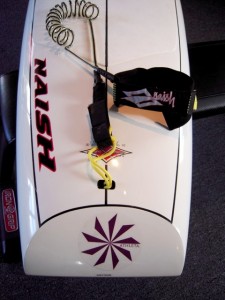 Always tell someone where you are going and when you expect to return, and maybe always go with a buddy. Make sure you are properly hydrated and have eaten enough food so you have the energy needed to stay out on the water and enjoy. On long distance runs, I’ll often wear a waist hydration pack filled with water and electrolytes. I may even stick a pack of endurance gel in there too.
Always tell someone where you are going and when you expect to return, and maybe always go with a buddy. Make sure you are properly hydrated and have eaten enough food so you have the energy needed to stay out on the water and enjoy. On long distance runs, I’ll often wear a waist hydration pack filled with water and electrolytes. I may even stick a pack of endurance gel in there too.
Be sure your board has a safety leash. This leash is my coil race leash attached to my race board. Leashes can be worn around your ankle or calf. This keeps the board attached to you should you fall off. It’s a safety hazard if you do not wear one — your board can easily slide out from underneath you and hurt others.
BOARD TYPES
If you are a beginner to the sport, it’s best to get a stable board to have the best experience. I’d say start with a board that’s at least 10- 11 feet long, maybe a little longer, and 29 inches wide or a little wider. Some boards are shorter, but boards as wide as 35 inches offer fun for everyone at any level! The learning curve with stand up paddling is amazingly quick. I’ve seen people outgrow their boards in a month’s time. (Once you’ve mastered the beginner stage, you may want to try some waves or enter a long distance race!)
There are basically three types of boards:
RECREATIONAL BOARDS are great for the entire family or if you simply want to cruise around with your friends. The board sizes range from 10 feet to 12 feet and come in different widths. Remember, the narrower the board, the less stable. Board construction and materials range from epoxy composites, wood veneers, and carbon wood composites to what are also called soft tops. This board is called the Mana made by Naish. It’s a ton of fun, very stable and can easily be a nice cruising board and catch some waves too. It is 10 feet long by 32 inches wide.
WAVE BOARDS, like mine pictured here, are very thin, fast and can turn on a dime down the face of a wave, much like a surf board. This board 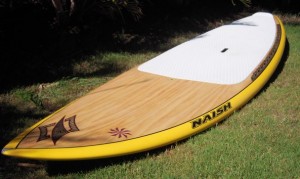 is a 9’ 3” in length and 29″1/6th wide. This board is purely for the waves. Some wave boards are as short as 7 feet, much like a surfboard.
is a 9’ 3” in length and 29″1/6th wide. This board is purely for the waves. Some wave boards are as short as 7 feet, much like a surfboard.
RACE BOARDS are really exciting and can even come with rudders built in so you can go up wind, or hold course on a race into chop with more ease. My race board is rudderless and is 14 feet of fun! We catch “glides” on swells that sometimes seem like half the length of a football field! Race boards are also used in flat water competition, and can be 17-18 feet in length.
Here’s a quick video snippet of what are called “ down winders” on Maui’s N.orth Shore. Simone Reddingius followed me down to grab some simple fun. Normally we have tradewinds at our back, blowing anywhere from 20-35 mph. This day was quite light. You can get your heart rate up pretty quick from the thrills of catching what are called “glides” that can connect from swell to swell.
A FUN DAY ON THE WATER
Here’s a few photos from our recent local Maui race, the Naish Championships. It was a 9.5 mile down winder on the open ocean. I felt proud wearing my ATHLETA tattoo and made sure my board was covered in ATHLETA stickers too! Off we went all 204 racers from six different countries! I came in a modest 5th in my class. I encountered fin and leash issues approaching the finish, but had a great day.
no images were found
PADDLES
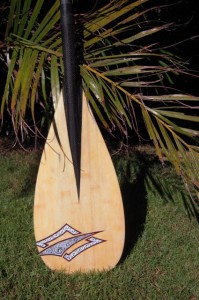 Paddles also come in different lengths, widths and materials. There are paddles made of alloy, carbon/glass composites, carbon/wood composites and full carbon. Some are even adjustable. As the sport continues to evolve, they are getting more and more comfortable to help reduce fatigue and increase performance.
Paddles also come in different lengths, widths and materials. There are paddles made of alloy, carbon/glass composites, carbon/wood composites and full carbon. Some are even adjustable. As the sport continues to evolve, they are getting more and more comfortable to help reduce fatigue and increase performance.
I just love how my paddle’s shaft is much thinner in diameter and the handle is incredibly comfortable. I have a paddle for wave paddling, racing and cruising. Different paddles are used, and vary in length. Some blades are narrower than others, but are typically 8-9 inches wide. Sometimes as I’ve noticed that if I switch down to an 8” paddle, my shoulders will be less fatigued. This is another article in itself.
There are many theories on how to measure a paddle, but really it’s personal preference. Here’s a chart I thought you’d enjoy to learn more about stand up paddle length:
SUN PROTECTION
ATHLETA rash guards are great, stylish sun protection! You can have fun, look good and most importantly be protected by the sun. This cute rash guard dries quickly and is 50+ UPF. This is the Summer Shade Tee.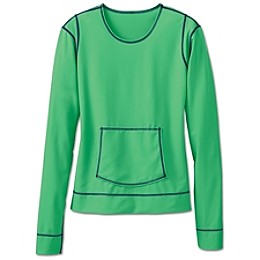
I also apply sunscreen not only to my face and neck, but to my hands too! Find a nice lip sunscreen too, and maybe a hat. I also try to wear good eye protection from the glare off the water.
ENERGY AND HYDRATION
Having fun on the water, with stand up paddling or any sport you enjoy, is sure to be more exciting if you don’t have to stop what you’re doing because you’re running out of steam or your thirst needs quenching. I like to suggest that before you venture onto the water, hydrate with at least 8-16 oz of water. On days where you might go exploring on longer distance paddles, it’s also a great idea to fill 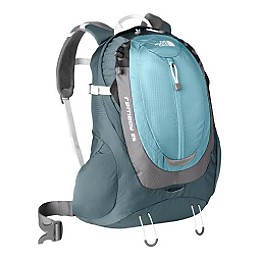 up a hydrating pack, like this great all in one Remedy Pack by North Face, that offers storage for quick snacks and allows you put in a liquid bladder.
up a hydrating pack, like this great all in one Remedy Pack by North Face, that offers storage for quick snacks and allows you put in a liquid bladder.
I always keep a few gel packs and a couple of small bags of almonds if I’m paddling for distance in my pack. On big training days, I’ll also add an electrolyte powder to help me fight cramping or extreme hydration.
As you’ve noticed with some of the great articles about SUP here on Athleta Chi, stand up paddling is all the rage for a great way to get healthy. You may not live on a beautiful island like Maui, but if you live near a serene lake you can explore interesting waterways. Find a sport that you enjoy to add to your current fitness routine. It’s an amazing way to tone your body, feel exhilarated and meet wonderful other paddlers in your community. STAND UP for your health and “sweep” today!
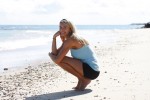 Feel free to contact me anytime if you have any questions about how to get into the sport, or want to share with our Athleta Chi community how SUP has helped YOU be healthy. If ever on Maui and you are seeking to plan a group , corporate or private lesson for SUP, call me! And if on Maui August 24th, join us for a Full Moon Paddle in North Kihei. Click here for details »
Feel free to contact me anytime if you have any questions about how to get into the sport, or want to share with our Athleta Chi community how SUP has helped YOU be healthy. If ever on Maui and you are seeking to plan a group , corporate or private lesson for SUP, call me! And if on Maui August 24th, join us for a Full Moon Paddle in North Kihei. Click here for details »
Aloha and in good health,
Suzie Cooney, CPT
SuzieTrainsMaui.com »
StandUpPaddlingFitness.com »
SuzieModelsMaui.com »
SUZIE COONEY is a former sponsored motocross racer and windsurfer who currently fills her time surfing, stand-up paddling, windsurfing, mountain biking, snowboarding and riding motocross. She is a professional fitness trainer… {more}


